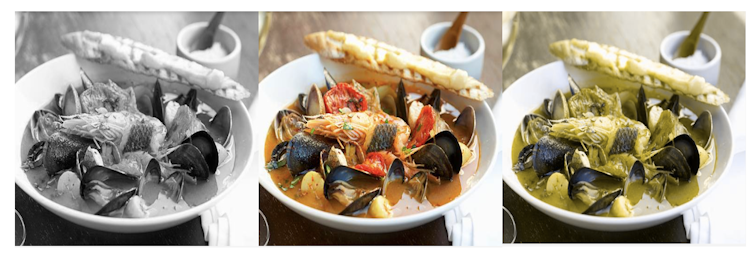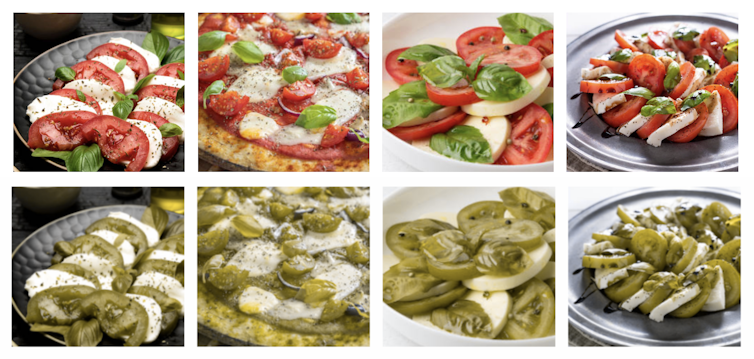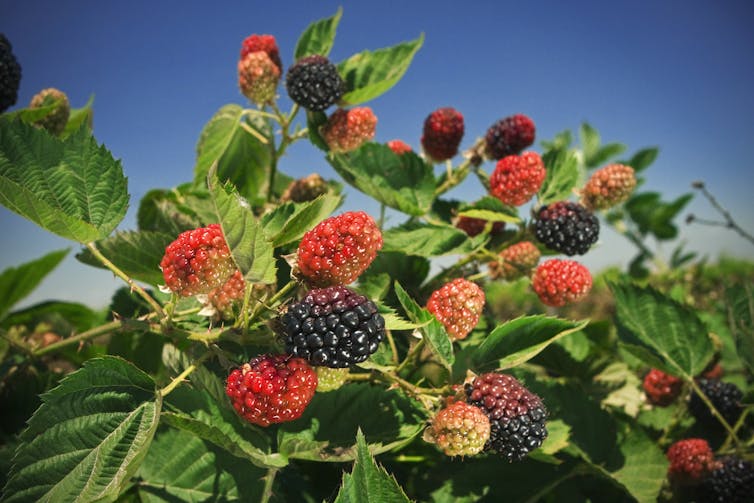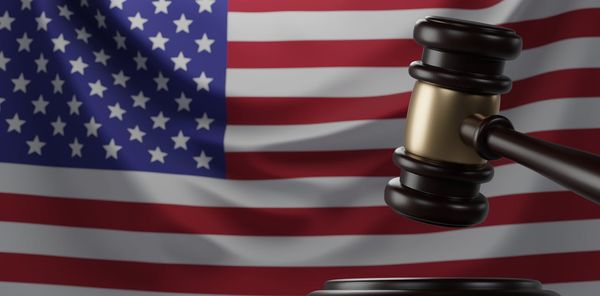
The seventh season of Julia Child’s “The French Chef,” the first of the television series to air in color, revealed how color can change the experience of food. While Child had charmed audiences in black and white, seeing “Bouillabaisse à la Marseillaise” in color helped elevate the experience from merely entertaining to mouthwatering.
I am a psychologist who studies visual abilities. My work, through a serendipitous research journey into individual differences in food recognition, uncovered a unique role for color in emotional responses to food.

People vary in their ability to recognize food
This journey started when my students and I measured how people vary in their ability to recognize images of prepared food. Over the past 20 years, we and other researchers have learned that people vary more than originally suspected in how well they discriminate and identify objects, like birds, cars or even faces.
It seems obvious that some people know more than others about birds or cars. Yet, interestingly, there is as much variation in face recognition ability, even though virtually every sighted person has experience seeing faces.
Experience with food is also universal. We were curious how much people would vary in their ability to recognize food items. Our tests simply ask people to match images of the same dish among similar ones, or to find the oddball dish among others. People vary a great deal on these tasks, and some of this variation is explained by a general ability to recognize objects of any kind.
But a portion of the food recognition differences among people was not explained by this general ability. Instead, we speculated that this variability may be related to people’s attitude toward new foods. People who strongly endorse statements like “I don’t trust new foods” or “I am very particular about the foods I eat” have what’s called food neophobia. It can lead to poor diet quality, resulting in nutritional deficiencies and higher risk of chronic disease.
As we predicted, we found that picky eaters scored worst on our tests of food recognition: Food neophobia is negatively correlated with food recognition ability.

Color connects food neophobia to recognition
While we were publishing our results, other scientists were debating new findings about how the brain reacts to food and color. Different research groups had identified brain areas in the visual system that responded preferentially to images of food. For instance, looking at a bowl of pasta would activate these brain areas, but not looking at a pile of string.
The scientific disagreement was about what it meant to identify a selectivity for food in areas of the brain already known for their responsiveness to color.
One group proposed that these parts of the brain responded to color because they are specialized to recognize food. The other group argued that color was not critical to the brain’s response to food. They even showed they could get similar brain activation when people looked at gray-scale images of food.
Was it possible that color was not critical to food recognition, while still playing a special role? We decided to replicate our initial study, with images of food in gray scale.
The results could have been predicted by Child herself: Without color, people unsurprisingly made a few more errors and mistook different dishes as the same kind of food, but the pattern of variation across people was otherwise unchanged. Those with a higher general visual ability did better with food, and we again found a specific ability for food that goes beyond this general effect.
But we did find one effect of removing color: food neophobia was no longer correlated with food recognition ability. It was as if whatever advantage the adventurous eaters had gained over picky eaters was all dependent on color.
Based on these results, we proposed two separate components of food-specific recognition ability. One is independent of color and explains why the results are the same in the experiments with and without color. The other one, related to emotional responses, is based on color and evidenced by the finding that food neophobia is only related to food recognition when the food appears in color.
We then made an entirely new prediction: Would people with color blindness – men, really, because color blindness affects 16 times more men than women – be less food neophobic than those with normal color perception? Because someone who is colorblind experiences food in a restricted range of color, some of the signals that raise flags about freshness, safety or otherwise drive anxiety about novel food could be limited.
We recruited participants online, including men in our study based on how they answered one question about color blindness that was buried in a long screening questionnaire. Our participants had no idea that we were interested in color blindness when we asked them then to fill out the Food Neophobia Scale that measures how resistant people are to new foods.
We found that colorblind men were indeed less food neophobic than non-colorblind men. We replicated this finding in another study, with colorblind men also reporting lower levels of food disgust. Seeing the world with a restricted color palate seems to mitigate an emotion-based resistance to new foods.

Color and emotional responses to food
Our research is broadly consistent with other findings. Color can help you decide whether food is cooked or if produce is ripe or rotten, and people tend to prefer meals with a range of colorful foods. Other research shows that color can influence what food tastes like. Some biologists have argued that the coloration of plants and the ability of animals to detect it have co-evolved.
The role of color in emotional responses to food opens up new avenues for addressing extreme cases of food neophobia. As researchers learn more about the intricate relationship between color perception and food, we might develop targeted interventions to improve dietary habits. Just like Julia Child’s colorful dishes, understanding and leveraging the power of color could enhance the appreciation and enjoyment of food.
Isabel Gauthier receives funding from the National Science Foundation.
This article was originally published on The Conversation. Read the original article.







